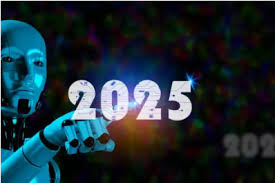The AI Revolution Continues: Key Tech Trends Shaping 2025
Artificial intelligence has moved far beyond the experimental phase and is now reshaping how we work, create, and solve complex problems. As we navigate through 2025, several key trends are defining the AI landscape and pointing toward an even more integrated future.
The Reality Check: Enterprise AI Adoption
While the headlines tout revolutionary breakthroughs, the real transformation will happen on enterprise time: longer, slower, and with far more friction than most expect. Companies are learning that implementing AI isn't just about adopting the latest tools—it's about fundamental changes to processes, training, and organizational culture.
This measured approach is actually healthy for the industry. Rather than rushing into AI for the sake of it, businesses are focusing on practical applications that deliver real value.
Multimodal and Agentic AI Takes Center Stage
AI becomes multimodal and agentic, optimizing experiences and driving breakthroughs across industries. We're seeing AI systems that can seamlessly work with text, images, audio, and video—not as separate capabilities, but as integrated tools that understand context across different media types.
The shift toward agentic AI means these systems are becoming more autonomous, capable of taking actions and making decisions rather than just providing recommendations.
Testing and Customization: The New Priorities
One of the biggest developments this coming year can be summarized in two words: testing and customization. The AI community is maturing, moving beyond the "one-size-fits-all" approach to creating specialized solutions for specific industries and use cases.
This focus on measurement and risk assessment is crucial. Organizations are finally asking the right questions: How do we measure AI's impact? How do we ensure it's safe and reliable? How do we customize it for our specific needs?
The Current Tool Landscape
The AI tool ecosystem has exploded with specialized solutions. Some of the best AI tools right now include ChatGPT for general assistance, Synthesia for video generation, Midjourney for image creation, Fathom for meeting notes, and n8n for automation. Each serves a specific purpose, reflecting the industry's shift from general-purpose AI to task-specific solutions.
Looking Ahead: Integration Over Innovation
Rather than focusing solely on the next breakthrough model, 2025 is shaping up to be the year of integration. AI is becoming embedded in everyday workflows, from government services to creative industries. The most successful AI implementations aren't the flashiest—they're the ones that solve real problems efficiently and reliably.
The AI revolution is happening, but it's happening thoughtfully. As we continue through 2025, expect to see more emphasis on practical applications, better risk management, and AI systems that truly understand and adapt to human needs.
What AI trends are you most excited about? How is AI changing your industry or daily workflow? The conversation around responsible AI implementation is just getting started.
References
- Andreessen Horowitz. (2025). "AI in 2025: Enterprise Reality Check." a16z Blog. Retrieved from a16z.com
- VentureBeat. (2025). "The Best AI Tools of 2025: A Comprehensive Guide." VentureBeat Tech News.
- MIT Technology Review. (2025). "Multimodal AI Systems: Beyond Text Processing." MIT Technology Review.
- Harvard Business Review. (2025). "Testing and Customization: The New AI Priorities." HBR Digital Articles.
- TechCrunch. (2025). "AI Tool Ecosystem Expansion in 2025." TechCrunch Startups.
- Forbes. (2025). "Enterprise AI Adoption: Measured Growth Over Hype." Forbes Technology Council.




Leave a Reply